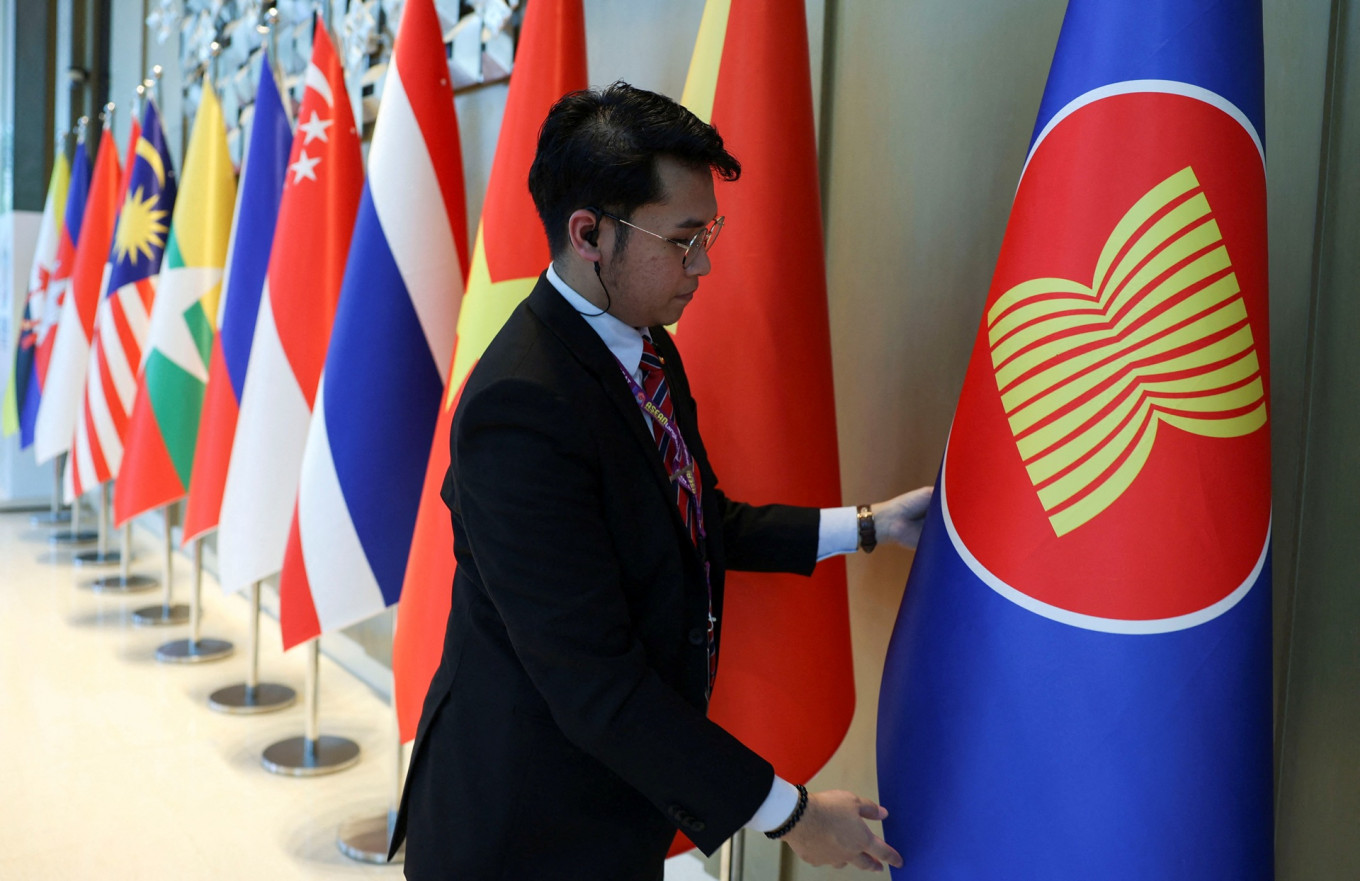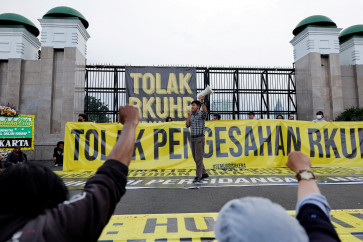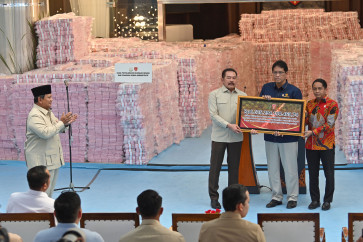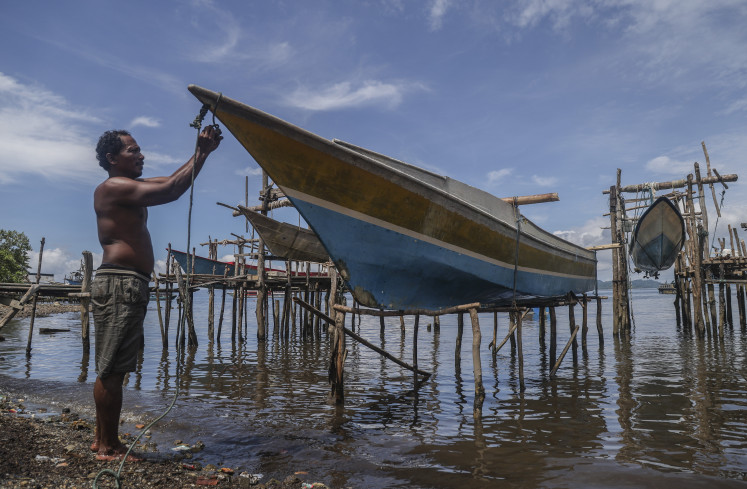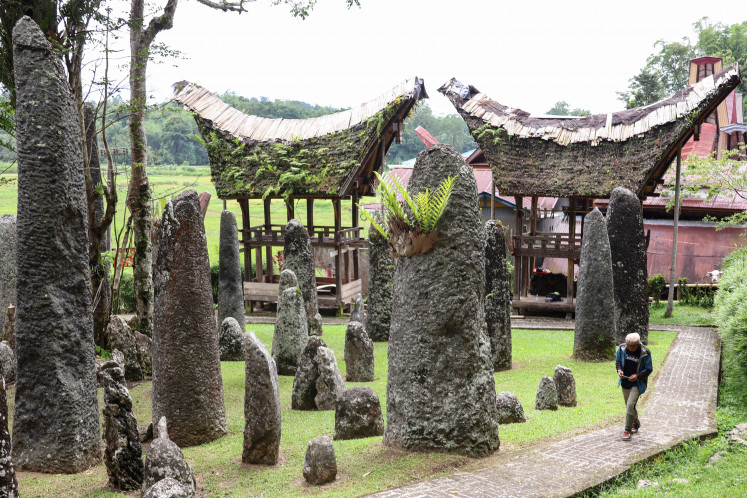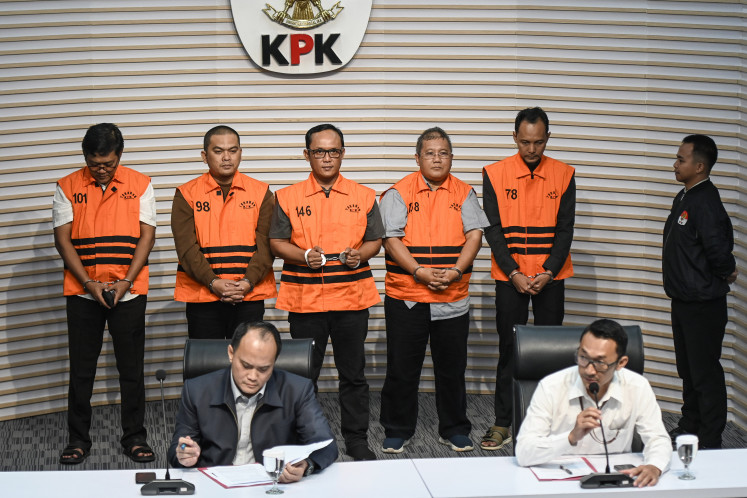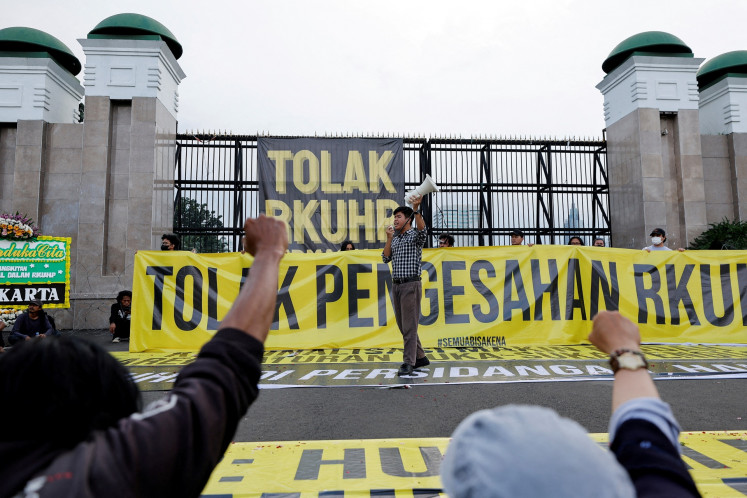Popular Reads
Top Results
Can't find what you're looking for?
View all search resultsPopular Reads
Top Results
Can't find what you're looking for?
View all search resultsSoutheast Asian nations caught in US-China tensions
Countries that were once able to benefit from both China’s foreign direct investment and US trade and aid programs now face threats to both of these relationships.
Change text size
Gift Premium Articles
to Anyone
A
s Asia adapts to the new reality of a US-China trade war, the precarious position of many smaller Southeast Asian nations has been laid bare.
Countries that were once able to benefit from both China’s foreign direct investment and US trade and aid programs, now face threats to both of these relationships. As new US tariffs and retaliatory Chinese tariffs come into effect, US aid frozen, and Chinese loans approaching maturity, there are fears that countries like Indonesia may increasingly be used as pawns in escalating hostilities between great powers.
The US and China have, for several years, battled for the top spot when trying to influence Southeast Asian nations. China has continuously used its economic dominance to become the go-to spot for loans which it uses to leverage soft power, while the US has worked hard to promote democratic values in the region using sanctions through the Magnitsky Act and trade restrictions, for many, including Thailand, the US is the main importer of goods.
The implementation of 10 percent tariffs on Chinese imports by the new US administration has brought into sharp focus the looming shift in agenda vis-a-vis Beijing and the opposition it is likely to encounter in the coming period. The aim of these tariffs is twofold: first, to decrease reliance on Chinese goods and, second, to reshore and boost US domestic production, a promise that has long been a feature of Donald Trump’s campaign speeches.
Back in 2018, during President Donald Trump’s first term in office, we saw similar tariffs placed on Chinese goods, from washing machines and bicycles to foreign metals. These tariffs were later kept and expanded under the administration of Joe Biden.
While the aim had been to curb reliance on China and boost US domestic production, the reality was a shift of Chinese production to other Southeast Asian countries like Thailand, Laos and Cambodia, nations with lower or zero tariffs on exports to the US. In effect, the US did not reduce its reliance on Chinese goods but instead redirected the supply chains through other countries, strengthening the smaller states’ economic ties to both China and the US.
This time, however, there are mounting fears that these tariffs could result in Chinese products flooding Southeast Asian markets as they prove too expensive for US importers. For countries such as Indonesia, this short-term shock will mean increased pressure to protect local manufacturers from one of their main trading partners.
For decades, Southeast Asian nations have relied on foreign direct investment (FDI) for China to support their growth. In 2022, China accounted for approximately 80 percent of Cambodia’s FDI, using Belt and Road Initiative (BRI) projects such as the controversial Dara Sakor resort and hydropower dams to prime Cambodia’s economy for rapid expansion. But as Laos is beginning to show, these loans come with maturity dates which are fast approaching and could be disastrous for the region's economic stability.
China’s own economic growth has started to slow, and with it so have the ambitions and investments of the BRI. Trump’s tariffs have left them with two options: continue with an increasingly inward-looking China, doubling down on the country's current strategy and further reducing its support for peripheral partners, or becoming the "savior" that fills the void left by the dominant power.
The first option would mean calling in those loans once handed out freely and turning away from neighboring nations, likely resulting in the crippling of the region's economy. For some nations which have relied on Chinese backing to prop up their leaders, fending off EU and US sanctions and conditional tariffs for human rights abuses, this could also lead to political instability.
However, China has appeared to take the second route. The ongoing freeze for USAID has also severely impacted the region, effects on those fighting for democracy, human rights and sustained economic growth in the region.
China’s willingness to step in and fill this gap could point toward a renewed shift toward dependence on China in the region. For example, Indonesia’s transition to green energy was heavily dependent on support from the US through the Just Energy Transition Partnership (JETP). The withdrawal of US funding for this program has left a void, and with China’s ever growing market for renewable energy, they may be one of very few options left to turn to.
While Chinese investment has been, and will continue to be, instrumental in the region's development, this new dominance created by them taking the place of the US could alter the power balance in the region.
This means security issues such as the South China Sea may no longer be seen as regional issues if China chooses to exercise its economic influence in political matters. Domestic issues, such as Cambodia’s democratic backsliding, could worsen without the influence of the US in the region, spilling over into other countries as assassinations continue to take place on foreign soil and cyberslavery runs rampant.
To ensure the stability and prosperity of the region, China cannot become the sole provider of aid and trade for these nations.
The reality, from a US standpoint, is that it is neither possible nor desirable to stop the import of all goods. Attaching human rights, rule of law or good governance conditions to current Most Favored Nation status could be a powerful tool for promoting stability and accountability in smaller states, while also serving to reduce dependency on China and encouraging more balanced economic relationships.
The unpredictability of President Trump means that many in Asia are waiting anxiously to see which of his campaign promises manifest into policy. As a Cambodian, I can only hope that the economic policies bring with them greater transparency and human rights adherence, although, given our country’s history, the path forward remains uncertain.
---
The writer is a Cambodian youth activist, a Human Rights Foundation Freedom Fellow and a youth ambassador for the Khmer Movement for Democracy.

